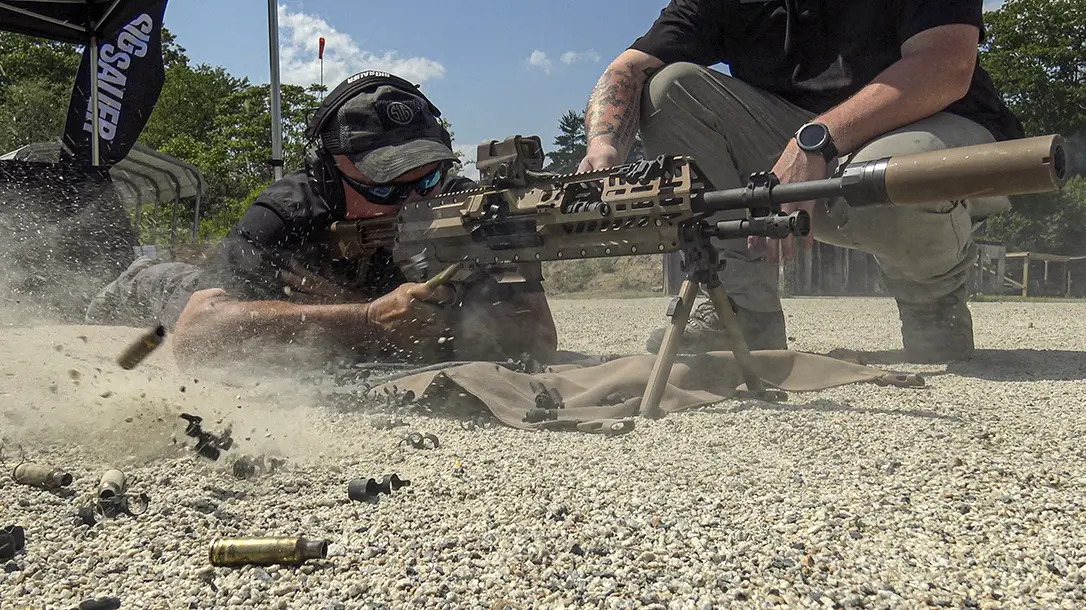There are average days at the range and then there are incredible days at the range. One such incredible day occurred recently as I walked out in the warm May sun in New Hampshire. My journey up North was to visit the good folks at Sig. The goal was to get some time on some very special guns. Today, I would be running the new Sig Belt Fed Machineguns.
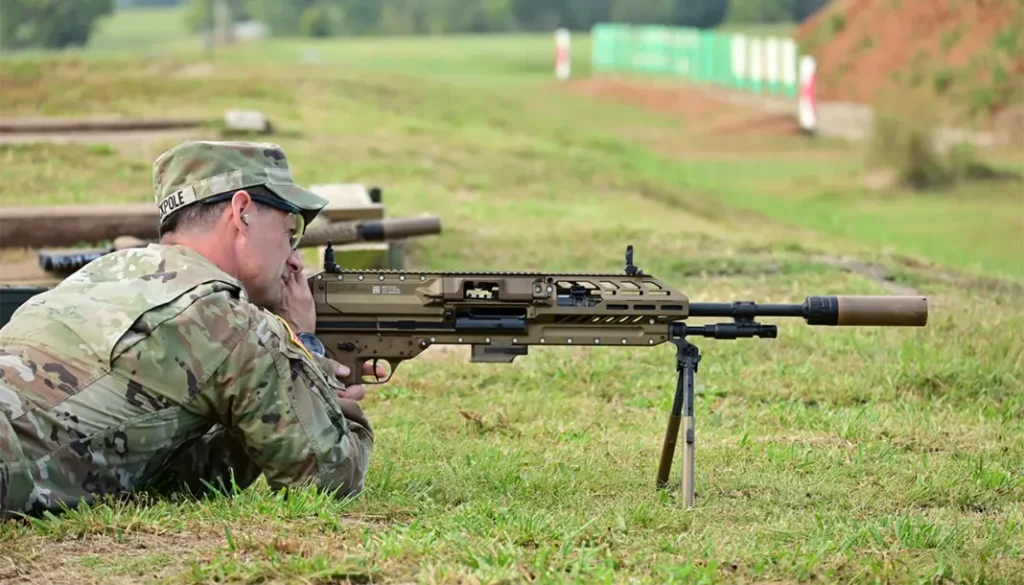
Enter the Belt Feds
The genesis of Sig’s development of belt-fed machine guns is based on the military’s NGSW or Next Generation Squad Weapon program. The core of this program is to find a replacement for the M249SAW and the M4 carbine with new weapons chambered in 6.8×51. This is intended to significantly increase lethality and probability of hit at the squad level. Due to the nature of the general-purpose ammunition, the 6.8mm projectile will outperform even the most modern 5.56mm and 7.62mm ammunition.
Advertisement — Continue Reading Below
First up was the SIG LMG-6.8, an air-cooled machine gun that fires from an open bolt. It has ambidextrous AR-style ergonomics, quick-detach magazines, increased M1913 rail space, and a quick-detach SIG-developed suppressor. The feed tray has a side-opening design, making it easier to manipulate and allowing for additional top-mounted attachments with minimal interference. It has a side charging handle, but even that was unique.
Its folding design keeps it out of the way and reduces the chance of snagging. The LMG-6.8 can be loaded on a safe or fire, with a feed tray open or closed, with or without the loading spoon, and with the bolt forward or back. It also features a mountable mag well for attaching its box magazine. This makes reloading on the move a more familiar and much easier task and significant for Sig Belt Fed Machineguns.
A Replacement for the M249 SAW
The LMG-6.8 can also be chambered in 7.62x51mm NATO and 6.5 Creedmoor. This is brilliant on Sig’s part as it allows soldiers to train with and expend existing ammo stockpiles while inventories of new ammo are built up. Even though it weighs less than the M249 SAW, it was easier to run because of Sig’s recoil mitigation design and engineering. While the classic position for a SAW is with the shooter prone behind it, the LMG-6.8 is light enough and ergonomically superior enough to fire off hand.
Advertisement — Continue Reading Below
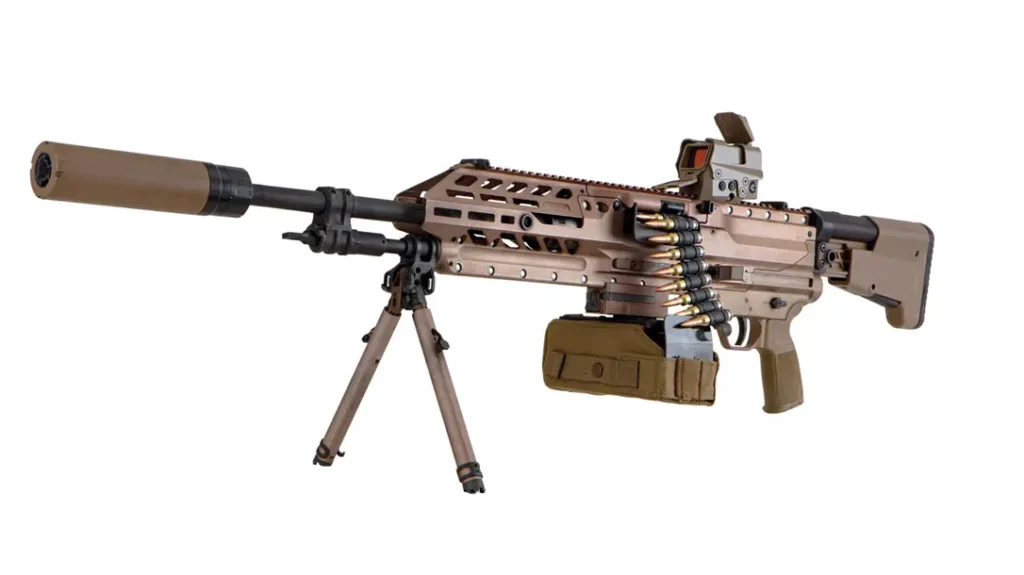
This is a major advantage for combat applications. While a based position is a better option, the ability to shoot and move with this belt-fed is a game changer. I have spent more than my fair share of time behind an M249SAW, and the LMG-6.8 is significantly better.
The experience was even more enjoyable because the gun was suppressed. The use of suppressors in combat has been a common practice in Special Operations forever. As the big Army started entering this realm, however, they soon began to experience the gas blowback that comes with cans. They realized that this was probably none too good for your health and began searching for less toxic options. Sig had an answer with their Sig Belt Fed Machineguns, as you have guessed.
Advertisement — Continue Reading Below
Shhhhh…Suppressor Time
The can we ran on the gun was a Sig Next Generation Suppressor. These suppressors are designed to reduce harmful backflow and signature and feature low flash with a quick detach design. They performed spectacularly as the rounds burned through the gun like butter. I had no gas back in my face.
When I thought my day could not have improved, I walked over to see the new Sig MG 338 belt-fed machine gun. Yes, a belt-fed machine gun chambered in .338. First introduced in 2017, it is designed to run the powerful, long-range .338 Norma Magnum (8.6x63mm) cartridge. It offers an effective range significantly longer than that of 7.62×51 NATO weapons and is close to the heavier M2HB 50BMG Browning.
The MG338 is also light, weighing less than the standard M240 / FN MAG machine gun. The Sig MG 338 belt-fed machine gun is a fully automatic, gas-operated, belt-fed weapon that fires from an open bolt. It uses a short-stroke piston gas system, with the piston running below the quick-detachable barrel. The gas block is provided with a manual gas regulator with two settings for normal or suppressed use.
Advertisement — Continue Reading Below
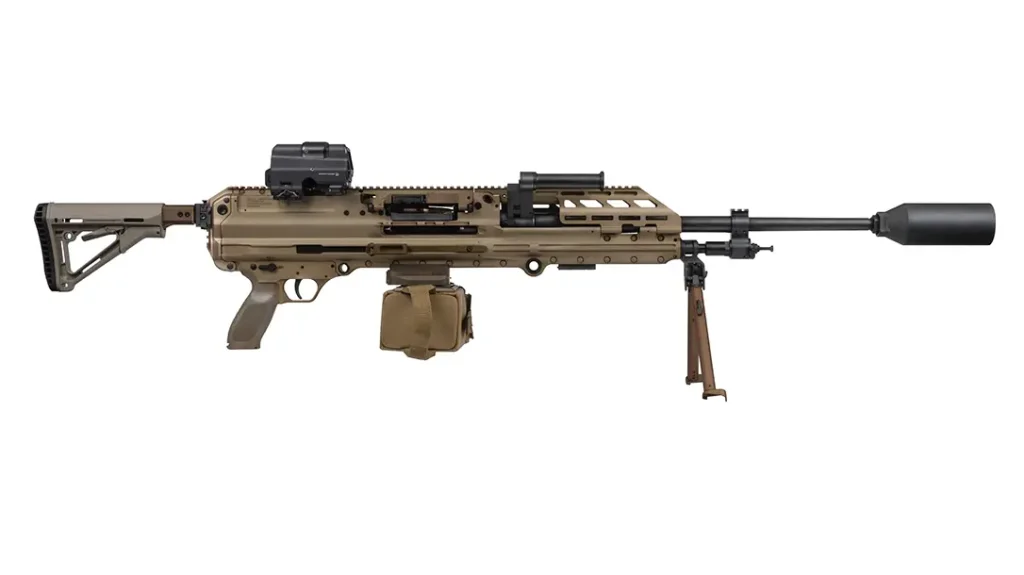
Easy Shooting
To reduce recoil, the bolt group is housed inside a long, tubular barrel extension, which allows recoil inside the outer receiver. The gun is fed using disintegrating belts with open loops, and ammunition is push-fed from the belt and into the barrel. Loading and unloading are achieved through a top-opening feed cover. The operator can easily set up the belt feed direction to feed from the left or from the right.
The manual safety is ambidextrous, and the user can set up the non-reciprocating charging handle on either side of the gun. Ammunition can be fed from loose belts or from special semi-rigid ammo pouches attached to the bottom of the gun. The gun can also be fed via a flexible chute from a large-capacity ammunition can installed on the vehicle.
Advertisement — Continue Reading Below
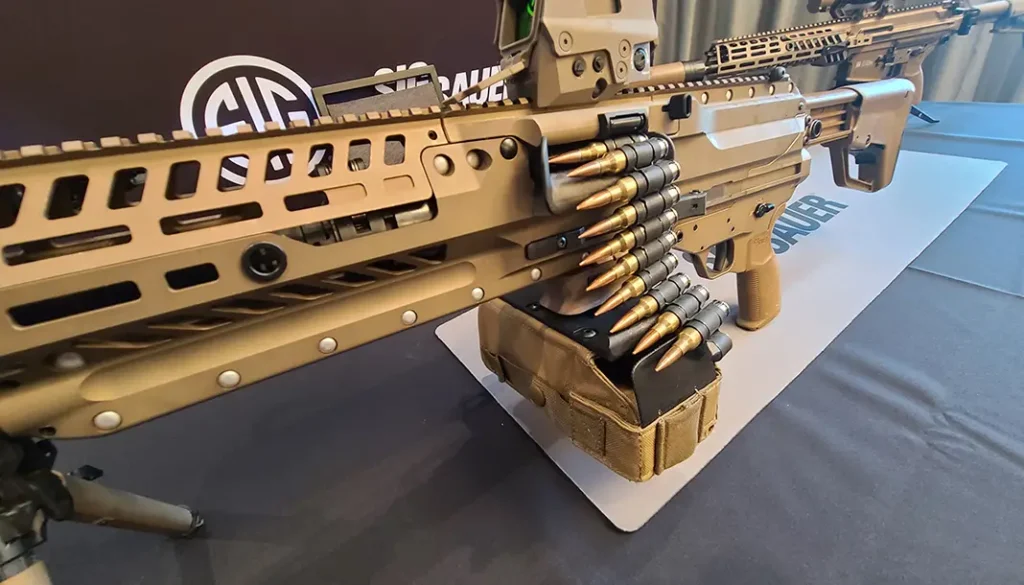
The gun has iron sights and a Picatinny rail interface on top of the receiver. This allows the installation of various day and night sights. This 300-grain belted magnum round has recoil similar to a 7.62mm NATO cartridge. Yet it is lethal to 1,700 meters or more. It has been reported that even at 1,000 meters, the .338NM can defeat Level III body armor. Simultaneously it is capable of penetrating soft-skinned vehicles. This meets USSOCOM’s need for a platform that could effectively bridge the gap between the M240 and the .50 BMG. Running this gun was reminiscent of an M240B 7.62 machine gun. It provided lighter recoil, however, and was very comfortable to shoot.
The Evolution of Sig
Sig has continued to make bold moves in the firearms industry, and this is just another example with their Sig Belt Fed Machineguns. I believe Sig will eventually become a large, diverse defense contractor with a solid commercial side. I, for one, am excited about their future and look forward to what’s next!
Advertisement — Continue Reading Below
For more information visit: https://www.sigsauer.com/
